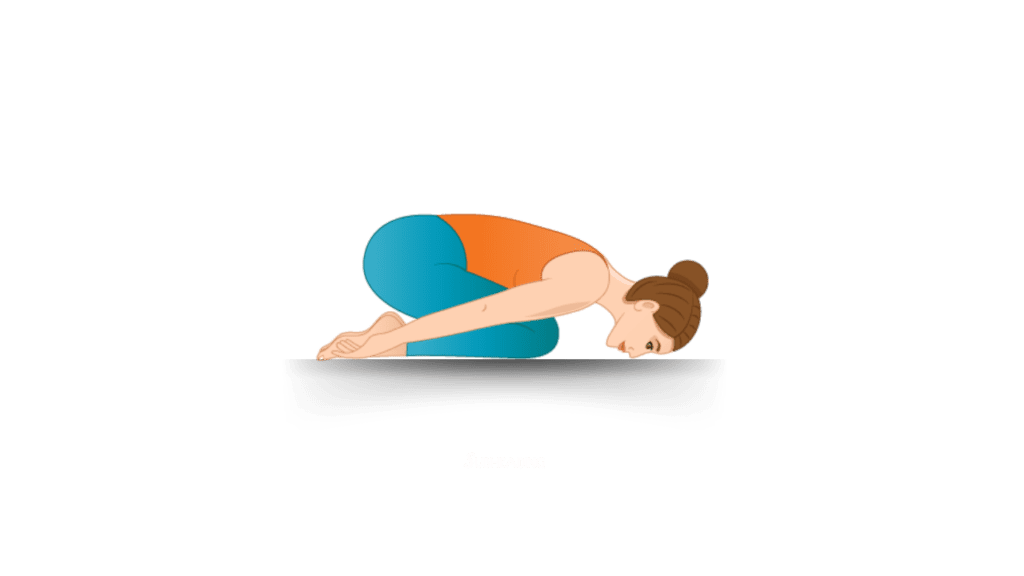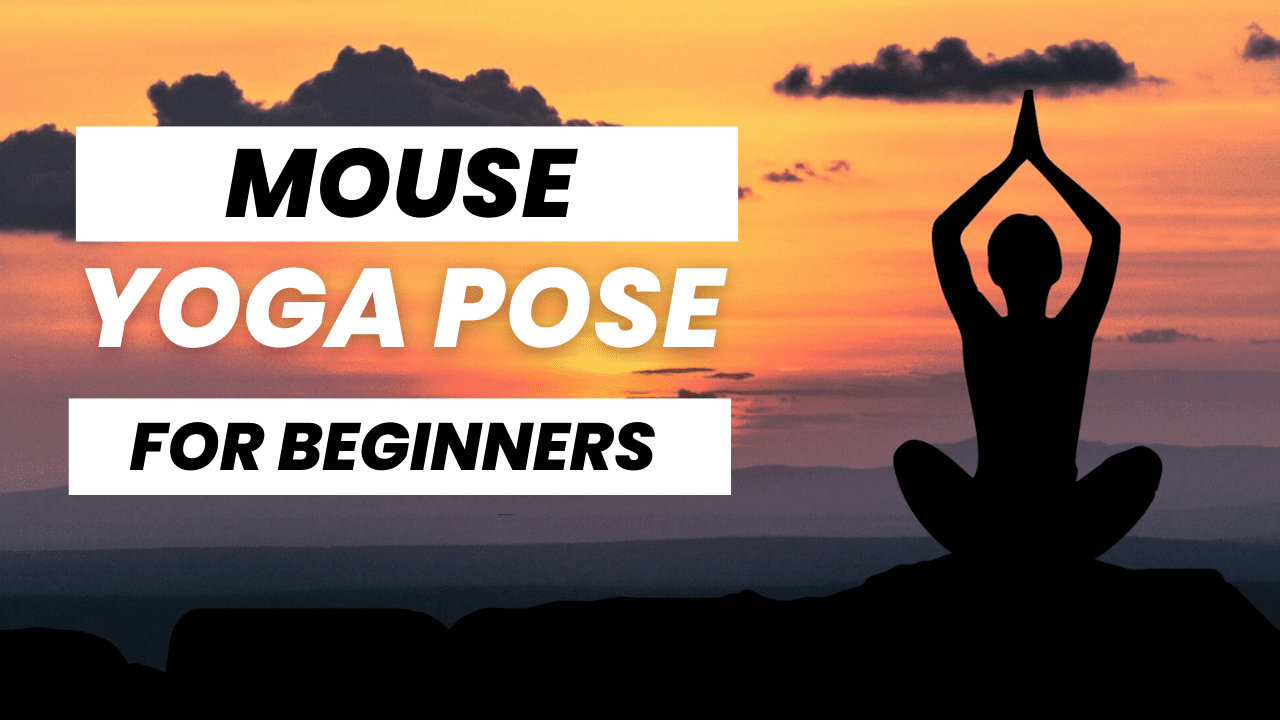Welcome to the enchanting world of yoga, where each pose brings its unique blend of benefits and challenges. Today, let’s explore the Mouse Pose, a quaint and lesser-known posture that promises to enhance your yoga experience. Perfect for both yoga novices and younger practitioners, the Mouse Pose is not only easy to learn but also incredibly beneficial for mental and physical relaxation.
What is the Mouse Yoga Pose?
The Mouse Yoga Pose, known in Sanskrit as “Mushakasana,” is a delightful and easy posture that mimics the compact, curled-up form of a mouse. This pose is excellent for beginners because it involves simple movements that focus on curling into a compact shape, which helps release tension in the body and fosters a sense of security and retreat from the external world.

How to Perform the Mouse Yoga Pose
Certainly! Here’s a shortened version of the steps to perform the Mouse Yoga Pose (Mushakasana):
- Prepare Your Space: Use a yoga mat or soft surface in a quiet area.
- Start Kneeling: Kneel with your buttocks resting on your heels and your hands on your thighs.
- Lean Forward: Inhale, and as you exhale, lean your torso forward, extending your arms in front of you on the mat.
- Lower Your Forehead: Gently lower your forehead to the ground, with your chest close to your thighs. You can extend your arms fully or let them rest by your sides.
- Relax in the Pose: Focus on deep, even breaths, relaxing your body into the pose. Hold this position for 30 seconds to a few minutes, depending on comfort.
- Release the Pose: To exit, walk your hands back toward your body, lifting your head last, and sit back on your heels to reflect on the pose.
This condensed guide will help you effectively and comfortably perform the Mouse Yoga Pose.
Curious about more yoga poses? Check out our detailed guide on “Advanced Puppy Pose” for another enriching addition to your practice!
Benefits of Practicing the Mouse Pose
Practicing the Mouse Pose offers several benefits:
- Enhances Flexibility: This pose gently stretches the back and neck, promoting spinal flexibility and helping to relieve common areas of tension.
- Promotes Relaxation: By curling into a tight ball, this pose helps to soothe the nervous system, making it an excellent choice for stress management.
- Improves Digestion: The compression in the abdominal area while in this pose can stimulate digestive organs, thereby improving digestion and alleviating issues like constipation.
Tips for Beginners
If you’re new to this pose:
- Begin on a yoga mat or a cushioned surface to avoid discomfort.
- Use a folded blanket under your knees or a cushion under your hips for extra support if needed.
- Maintain slow and deep breaths to maximize relaxation during the pose.
Adding Mouse Pose to Your Routine
The Mouse Pose can be a versatile addition to your yoga routine. It’s excellent as a warm-up to relax the mind and body before moving into more complex poses, or as a cool-down to conclude a session, helping to integrate the benefits of the exercises performed.
Common Mistakes to Avoid
When practicing the Mouse Pose, ensure you:
- Do not rush into the position, which might lead to unnecessary strain.
- Avoid holding your breath; steady breathing enhances the calming effects.
- Keep your neck and shoulders relaxed to prevent tension build-up.
Curious about more yoga poses? Check out our detailed guide on “Cactus Yoga Pose” for another enriching addition to your practice!
Mouse Pose for Children
The Mouse Pose is especially appealing to children, offering them a fun way to participate in yoga through imaginative play. Describing the pose as mimicking a small, snug mouse allows children to engage more fully with the activity, enhancing both their enjoyment and the relaxation benefits.
Mouse Pose Variations
For those looking for a deeper stretch, try the Extended Mouse Pose. Extend your arms as far forward as possible, spreading your fingers wide, to deepen the stretch across your back, providing a more intense release.
Yoga Props for the Mouse Pose
Props can enhance the comfort and effectiveness of the Mouse Pose. A yoga block can be placed under the forehead for those with less flexibility, and a bolster can support the chest or belly, making the pose more accessible and comfortable, especially for prolonged periods.
Precautions and Contraindications
It’s important to consider personal physical conditions when practicing the Mouse Pose. Those with serious neck or spine issues should approach this pose cautiously or discuss alternatives with a healthcare professional to avoid exacerbating any conditions.
Breathing in Mouse Pose
Integrating deliberate, mindful breathing into the Mouse Pose can significantly enhance its stress-relieving properties. Focus on inhaling deeply and exhaling fully to promote a deeper sense of relaxation and internal peace.
Mouse Pose in Restorative Yoga
In restorative yoga, the Mouse Pose is a cornerstone for deep relaxation. The pose can be held for several minutes, with the body fully supported by props, to allow for deep relaxation of the muscles and the mind.
Curious about more yoga poses? Check out our detailed guide on “Standing Bow Pose” for another enriching addition to your practice!
Advanced Tips for the Mouse Pose
For seasoned yogis, deepening the relaxation and meditative aspects of the Mouse Pose can be achieved by focusing on complete muscular relaxation and extending the duration of the pose, accompanied by deep, mindful breathing.
Conclusion
The Mouse Yoga Pose is a simple, yet profound practice that brings numerous benefits to practitioners of all levels. Here are some key takeaways:
- Ideal for All Levels: Suitable for beginners and young yogis.
- Reduces Stress: Excellent for calming the mind and easing anxiety.
- Promotes Physical Health: Helps improve flexibility and digestion.
Regularly incorporating the Mouse Pose into your yoga routine can help you achieve a balanced, relaxed state of mind and a more flexible, healthy body.
